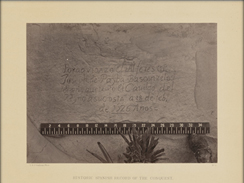~ Book Reviews ~
Tim — The Story of Timothy H. O'Sullivan
As a Young Apprentice at Mathew Brady's Studio
By Daniel A. Sheridan
Goodreads Review: ★★★★★
"A Brilliant Blend of History, Art, and Imagination — Tim deserves a place alongside classics like The Invention of Wings and Girl with a Pearl Earring."
By Rachel - Scotlite's Book Review
Tim by Daniel A. Sheridan is one of those rare debut novels that quietly pulls you into a forgotten time and makes you feel like you’ve stepped right into history. Set in mid-19th century New York, the story follows young Timothy O’Sullivan, an apprentice at Mathew Brady’s legendary daguerreotype studio. What begins as a boy’s coming-of-age journey quickly turns into a vivid exploration of art, ambition, and the birth of modern photography.
Sheridan’s background in photojournalism shines through every page. The descriptions of Brady’s studio, the camera equipment, and the early struggles between photographic processes are incredibly immersive — it’s like watching history develop in a darkroom. But beyond the technical beauty, there’s a deeply human story here: a curious young boy discovering his purpose through art and mentorship.
The relationship between Tim and Brady feels authentic and layered part teacher and student, part artist and dreamer. Their dialogue captures both the tension and tenderness of creative growth, reminding readers how innovation often comes from patience, curiosity, and courage. Sheridan’s writing is clean, visual, and emotionally resonant. You can almost smell the chemicals, hear the shutters, and sense the pulse  of a rapidly changing America. Tim doesn’t just tell a story it preserves a piece of photographic history with heart and grace.
of a rapidly changing America. Tim doesn’t just tell a story it preserves a piece of photographic history with heart and grace.
A must-read for anyone who loves historical fiction, art, or stories about creative discovery. Tim deserves a place alongside classics like The Invention of Wings and Girl with a Pearl Earring. ❏
Click here to read Tim book review on GoodReads.com
Book Review on Goodreads, ★★★★★
‘I am looking for that indefinable something which conveys my artistic vision.’
– History comes alive!
By Grady Harp on GoodReads.com and Amazon.com
Author Daniel A. Sheridan studied photojournalism and the history of photography at New York University and served as a darkroom technician at The Photography Workshop, as editor and photographer at Low-RANGE magazine, and as a drummer in the band The Immigrants.
TIM is his debut novel – and who better to write this book than Daniel?! For those unfamiliar, Timothy H. O’Sullivan (1840 – 1882) was a photographer widely known for his photographs of the US Civil War and the American West.
Bringing to our attention the special gifts of the often-overlooked Timothy H. O’Sullivan, the apprentice to the famous photographer Matthew Brady, this immensely entertaining novel recreates the mid-nineteenth century and an important overview of the history of photography.
The interaction between Tim and Brady is beautifully rendered, offering insights into the development from daguerreotype to photograph – or in Brady’s advice to Tim, ‘The war over photography... The French process versus the English process. We must choose our allies carefully and know our enemy. You see, we’ve been working with the daguerreotype process for these last ten years…’
 By inserting his own progress in photography alongside Tim’s progress, Daniel makes this book ring true and even more accessible in honoring the art and history of photography. This is a fascinating and beautifully written book – one that deserves a very wide audience. Highly recommended. ❏
By inserting his own progress in photography alongside Tim’s progress, Daniel makes this book ring true and even more accessible in honoring the art and history of photography. This is a fascinating and beautifully written book – one that deserves a very wide audience. Highly recommended. ❏
Click here to read Tim book review on GoodReads.com
Goodreads Reviews: ★★★★★
"Sheridan writes about photography the way poets write about love."
~ John Peter, Goodreads Reviewer
Regina Kate
There’s something enchanting about reading a book that feels painted rather than written. Tim is that kind of story. Every scene glows with light and shadow, like one of the daguerreotypes Sheridan describes. I could practically see the silver plates reflecting the city’s fog and faces. What stood out most to me was the tenderness with which Sheridan writes about mentorship and creativity. Brady is both genius and tyrant a man obsessed with capturing immortality. And Tim? He’s the perfect lens through which we see the world’s transformation. Beautifully told, meticulously detailed, and full of heart. I’ll be thinking about this one for a long time.
Jeffrey Shawn
I think what Sheridan accomplishes here is beyond storytelling, it’s preservation. He’s taken a largely forgotten figure, Timothy O’Sullivan, and given him a voice, a childhood, and a place in our imagination. The research is clear, but it’s never dry. What you feel instead is reverence for art, for craftsmanship, for those who dared to experiment before there were manuals or safety nets. The friendship-mentorship between Brady and Tim reminded me of relationships in my own life: stern guidance mixed with deep, unspoken respect. Every time Tim learned something new about light or time, I felt that same spark of wonder. By the end, I wasn’t just reading about photography I was seeing how passion and persistence shape who we become. A stunning, soulful work.
Margaret
The writing is so rich that I had to slow down just to savor certain passages. Sheridan’s New York is colorful and alive, equal parts wonder and danger. Absolutely engrossing.
Ava Bradford
Every word feels etched in silver. Sheridan’s writing is that precise, that luminous. Tim is one of those novels that feels slow in the best possible way it makes you linger, observe, notice light on faces and dust in the air. It reminded me why I fell in love with both photography and storytelling in the first place.
Sabine Traeder
What amazed me most about this book is its balance it’s sweeping in historical scope yet intimate in emotion. You see photography being born, but also a young boy learning about responsibility, creativity, and himself. Sheridan manages to make history feel deeply personal. That’s a rare gift.
Frank
Daniel A. Sheridan has crafted something far more ambitious than a simple historical novel. Tim is a genuine reconstruction of a moment in American history that we rarely see explored the messy, experimental, almost mystical birth of photography as an art form. Sheridan’s attention to detail is staggering. Whether he’s describing the texture of a daguerreotype plate or the feel of walking through pre–Civil War New York, every sensory cue feels authentic. But the true strength of the novel lies in Tim himself. His innocence, curiosity, and occasional fear give the book emotional grounding. Through Tim, we witness the awe of capturing an image for the first time an act that feels simultaneously scientific and magical. Sheridan’s portrayal of Mathew Brady adds another layer of depth, offering a portrait of a complicated artist whose genius borders on obsession. A stellar, meticulously researched, emotionally resonant story.
Elijah William
It’s astonishing that this is Sheridan’s first novel. The confidence, the rhythm, the emotional intelligence it feels like the work of someone who’s been writing for decades. Tim isn’t just a debut; it’s an arrival. It’s the kind of story that honors both history and the human heart.
Deborah
Few debut novels feel as assured as this one. Sheridan manages to intertwine the meticulous technical world of early photography with the emotional journey of a child forced into adulthood far too soon. The story excels in its layered structure: on the surface, it's about Tim’s apprenticeship; underneath, it’s about the birth of modern visual storytelling how images came to shape our understanding of war, identity, and memory. I found the scenes where Brady explains the “war over photography”French vs. English processes particularly fascinating. Sheridan uses these competing techniques as metaphors for choice, change, and progress. Tim, caught in the middle, becomes a stand-in for all young artists torn between tradition and innovation. Every chapter feels intentional. Every detail serves a purpose. By the end, I felt as if I had watched not only Tim grow, but an entire medium come to life. A rare, thoughtful, brilliantly crafted novel.
John Peter
Light that’s what this book is really about. How we see it, how we capture it, how it changes us. Sheridan writes about photography the way poets write about love. Each page feels illuminated by admiration for those who first learned to trap light on glass. Absolutely beautiful.
Roselia
This story reminded me why I love creative people — they see the world differently. Sheridan’s writing has that same visionary quality. You can feel his reverence for art, his empathy for Tim, and his fascination with how new technology changes us. It’s rare to find a book that feels both historical and modern in spirit. Tim is about invention, yes, but also about courage, the courage to imagine a world that doesn’t exist yet. Reading this felt like standing in front of an old photograph and realizing the people inside it once breathed, dreamed, and fought for beauty. That’s powerful storytelling.
Alfred
From the first page, it’s clear Sheridan knows what he’s writing about. His background as a photojournalist gives the story incredible depth. I loved how the book showed the clash between old and new ideas daguerreotype versus modern photography through the lens of a young boy’s ambition. Beautifully told.
Rachel Raph
This book completely surprised me. What starts as a simple tale about a boy’s apprenticeship becomes a journey into the soul of art itself. Sheridan paints 1850s New York with such texture the cobblestone streets, the smoky studios, the fragile hope of invention. Tim’s curiosity and courage reminded me how every artist begins: uncertain, but full of wonder. I finished the last page feeling inspired and oddly nostalgic, like I’d just stepped out of a photograph that came to life.
"I didn’t expect to cry at a story about daguerreotypes, but here we are. Loved it."
Melvin
This book made me feel like I was standing in that old studio, watching a picture form in the light. The mix of wonder and hardship in Tim’s story was just beautiful. Sheridan writes with a kind of quiet power that sneaks up on you. I didn’t expect to cry at a story about daguerreotypes, but here we are. Loved it.
Agnes Adams
What a gem! Sheridan combines adventure, mentorship, art, and history in one smooth narrative. Tim is an endearing protagonist, and his observations offer a unique window into a time period we rarely read about.
Readers Judy
Elegant, atmospheric, and surprisingly funny in moments. The transitions between Tim’s youthful curiosity and the enormous historical weight around him are handled with such grace. I adored this.
Friedrich Claus
There are novels that inform, and then there are novels that illuminate. Tim belongs to the second kind. Sheridan doesn’t just show us the dawn of photography he shows us what it means to chase light when the world around you is still learning to see it.  Through young Tim’s eyes, the dusty streets of 1850s New York become a stage for invention and self-discovery. The relationship between Brady and Tim fascinated me; it’s part mentorship, part quiet battle between old vision and new possibility. Sheridan’s writing is patient and rhythmic each scene unfolds like an exposure coming to life. By the end, I felt I understood something about courage, not just art: the courage to look closely, to hold on to what others overlook, and to make something lasting out of it.
Through young Tim’s eyes, the dusty streets of 1850s New York become a stage for invention and self-discovery. The relationship between Brady and Tim fascinated me; it’s part mentorship, part quiet battle between old vision and new possibility. Sheridan’s writing is patient and rhythmic each scene unfolds like an exposure coming to life. By the end, I felt I understood something about courage, not just art: the courage to look closely, to hold on to what others overlook, and to make something lasting out of it.
Click here to read Tim book reviews on GoodReads.com
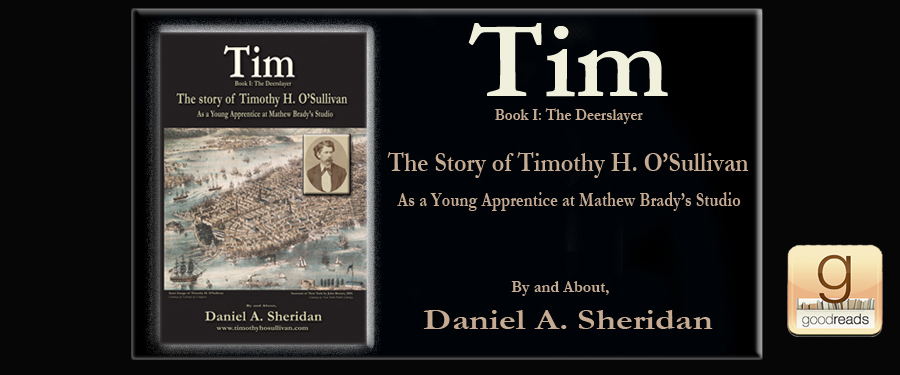
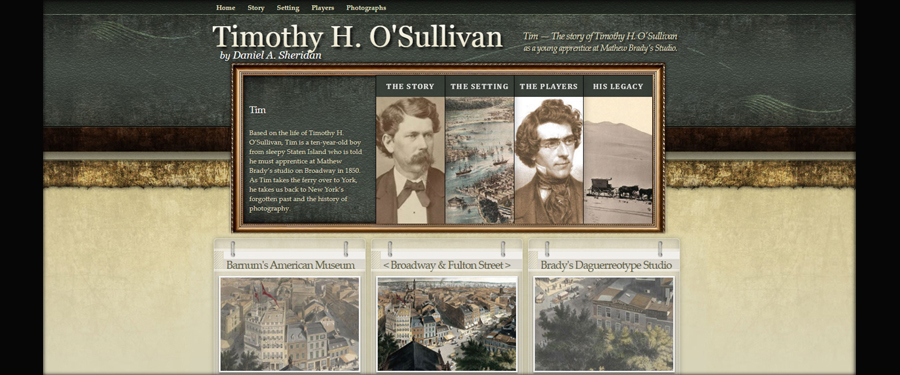
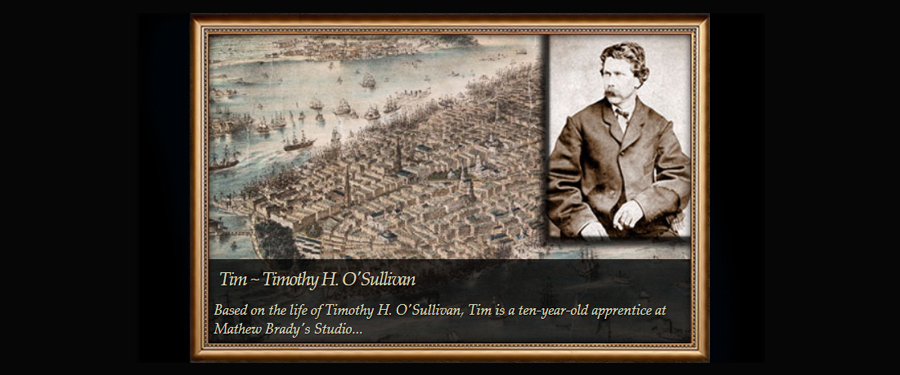
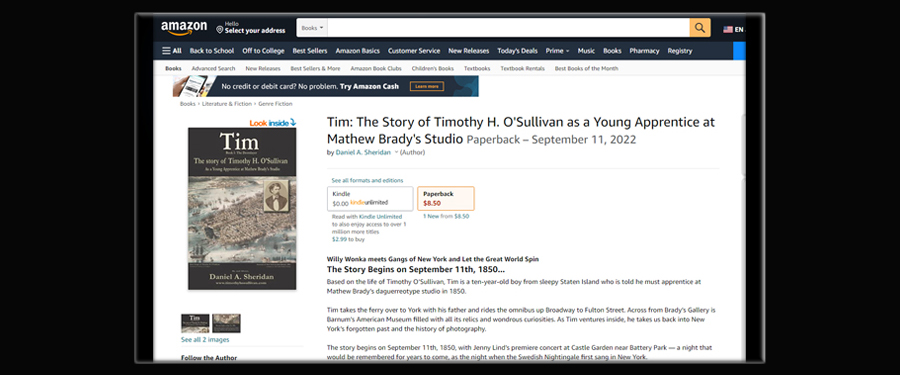

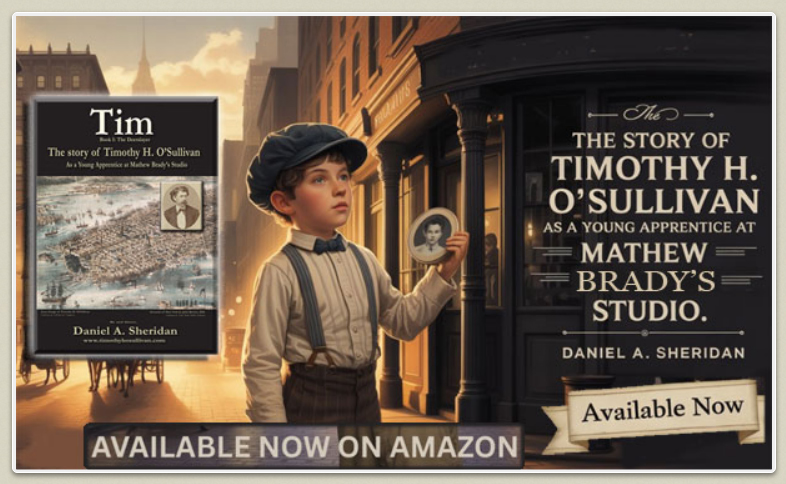

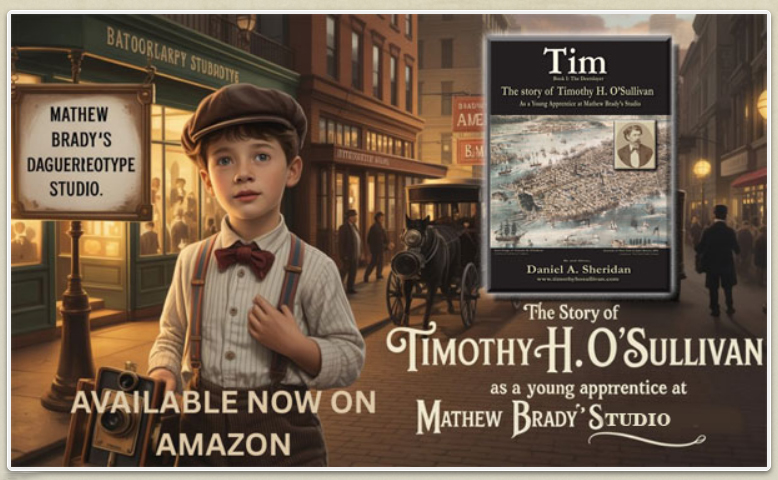





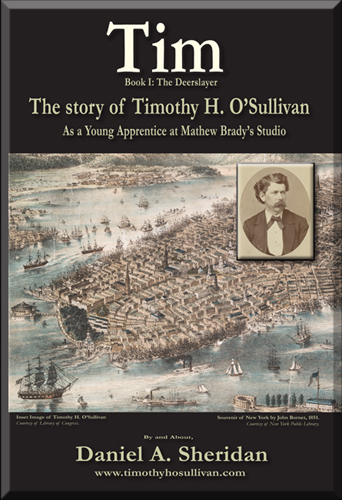



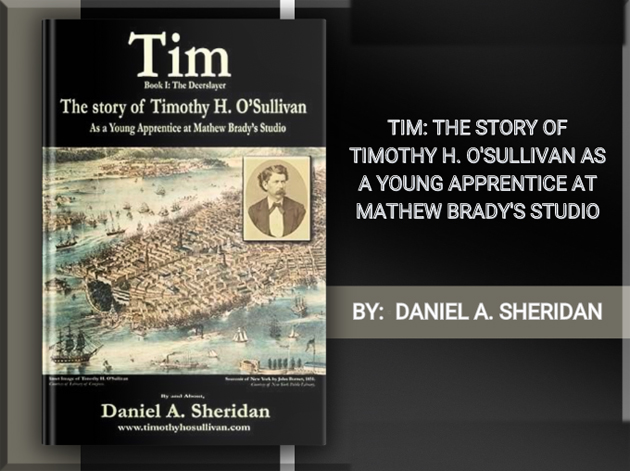
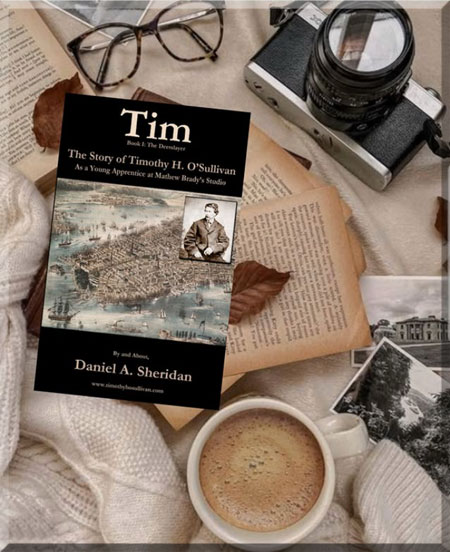


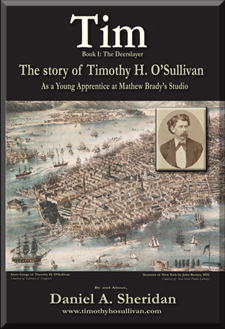
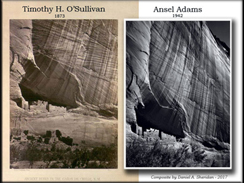
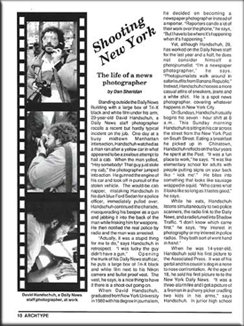 Click here
Click here


